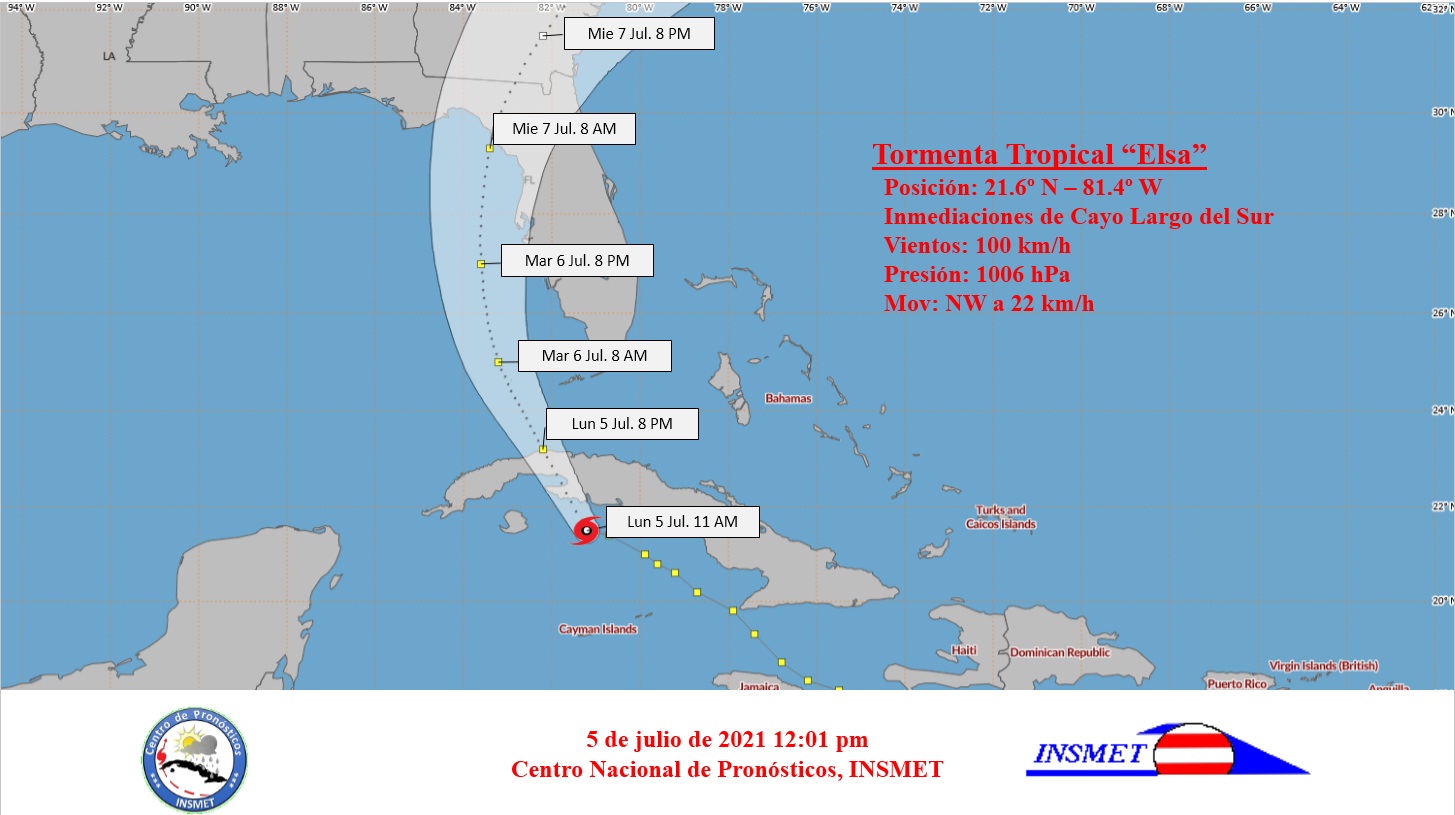
During the last hours, the clouds and rains of tropical storm Elsa have affected the central region, which have become strong and intense in some locations, with the highest accumulated today in the province of Sancti Spiritus.
The meteorological station called El Jíbaro has reported a total of 283 millimeters since eight o'clock in the morning yesterday, of which 271 millimeters between five and eleven o'clock in the morning, while 211 millimeters accumulate in Topes de Collantes, Escambray, since 8 in the morning yesterday, with a cumulative 191 millimeters in the last 6 hours.
The fluviometric network of the National Institute of Hydraulic Resources reports 35 accumulated above 50 millimeters, of which 10 exceed 100 millimeters in 24 hours to eight o'clock in the morning, in the provinces of Santiago de Cuba, Granma and Sancti Spiritus.
Elsa maintains a northwest course, at about 22 kilometers per hour and has maximum sustained winds of 100 kilometers per hour, with higher gusts and the central pressure is 1006 hectoPascal.
In the next 12 to 24 hours, Tropical Storm Elsa will continue heading close to the northwest, with a similar speed of translation. It must make landfall, this afternoon, through the Zapata Swamp, on the southern coast of Matanzas. This system must have a subsequent weakening when advancing inland.
Clouds and rains will continue to affect the central region of the country, which will continue to be strong and intense in some locations, mainly in mountainous areas. These precipitations will extend to the western region with the advance of the system, during the afternoon of today. Although rainfall has decreased over the eastern region, rains and thunderstorms are possible, far from the center of Elsa, produced by its more external circulation.
On its approach to the province of Matanzas, the strength of the winds will gradually increase, with speeds between 60 and 75 kilometers per hour, and higher gusts of up to 100 kilometers per hour. These winds will spread to the provinces of Mayabeque, Havana and Artemisa, with the transit of Elsa over western Cuba.
The swells will continue throughout the southern coast of Cuba, with slight coastal flooding from the southern coast of Matanzas to the Gulf of Guacanayabo. On the north western coast there will be strong swells, with light coastal flooding beginning at night, in low areas of that coastline.
The next tropical cyclone warning will be issued at three in the afternoon on Monday.
